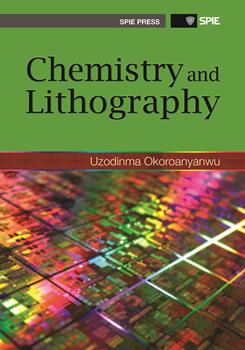|
Like their conventional optical lithography counterparts (discussed in Chapter 13), EUV lithography and x-ray lithography utilize photons to image and pattern devices. But unlike their conventional optical lithography counterparts, they utilize extremely short-wavelength photons in the soft (for EUV lithography) and hard x-ray (for x-ray lithography) regions of the electromagnetic spectrum. Of these two lithographies, x-ray lithography was the first to be successfully demonstrated to be useful in lithographic patterning. The resolution potential of both x-ray and EUV lithographies, given their short wavelengths, was the main motivation for their development. The two main printing modes of these lithographies are in proximity mode (for x-ray lithography) and projection mode (for soft x-ray lithography, also called EUV lithography). In the following sections, we discuss the essential attributes of these lithographies. 14.2 Proximity X-Ray Lithography Lithography using x-ray photons with extremely short wavelengths in the range of 0.4 nm to 2 nm can inherently overcome the diffraction effects associated with imaging features with sizes comparable to the exposure wavelengths of UV lithographies. This was the main motivation underlying x-ray lithography. However, at x-ray wavelengths, there are no known materials for making image-forming lenses or mirrors. Consequently, proximity x-ray lithography (see Fig. 14.1), where the mask is brought to within a few microns of the wafer and the x rays are passed directly through the mask and onto the wafer, was invented. The year 1972 witnessed the invention of proximity x-ray lithography by Hank Smith at Massachusetts Institute of Technology. Many companies (IBM, Cannon, Nikon), universities (MIT and the University of Wisconsin), and governments (United States and Japan) spent well over a billion dollars on its development. The first attempts at production of x-ray aligners were made in the mid-1970s by AT&T and MIT, and in the early 1980s by Micronix Partners, Hampshire Instruments, Nikon, and Karl Suss. X-ray step-and-repeat and step-and-scan systems were eventually made commercially available. |
|
|


